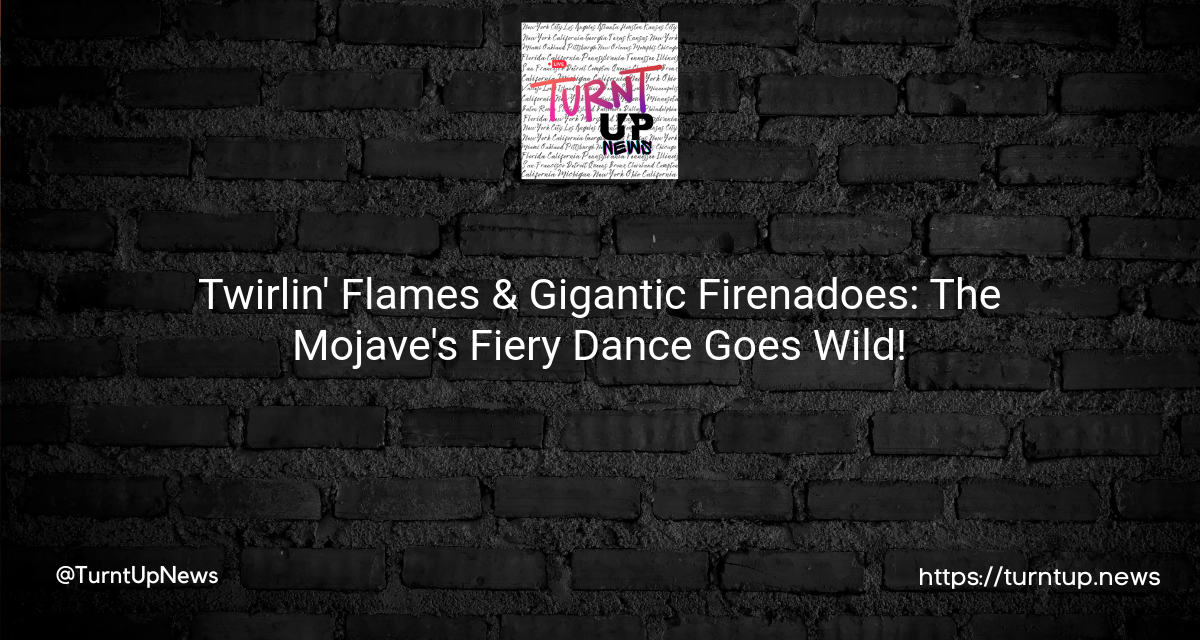🔥Twirlin’ Flames & Gigantic Firenadoes: The Mojave’s Fiery Dance Goes Wild!🌪️
TL;DR: The Mojave National Preserve is hosting this year’s largest California wildfire – an inferno spanning 70,000 acres with flames dancing up to 20 feet high. Throw in some firenadoes, and we’ve got ourselves a party… or do we?🤔
In the heart of the Mojave National Preserve, nature seems to be having its own kind of fire festival. Imagine this: Joshua trees swaying not to music, but to erratic gusts that boost 20-foot high flames. The York Fire, our not-so-friendly neighborhood pyro, kicked off the party on Friday and by Sunday night, this uninvited guest was whopping through 70,000 acres of juniper and Joshua tree woodland. Hey, York Fire, ever heard of party etiquettes?🙄
Not just that, this raging event didn’t shy away from gatecrashing across state lines into Nevada. Folks in the Las Vegas Valley didn’t need to buy tickets; they got a smoky preview right from their backyards. But hold on, the highlight of this event? Fire whirls. Yep, you heard that right. Firenadoes were out and about, swirling their fiery tails and capturing attention, while the national preserve was busy snapping their pics for Facebook. 😎📸
But let’s not get too carried away with the excitement. Firenadoes might sound like something off a sci-fi thriller, but they’re no joke. These bad boys can shift directions like a moody teenager and fling embers across vast distances. And here’s a fun (or not so fun?) fact: A fire whirl is essentially a spinning column of flames and smoke, acting like a cousin to the dust devils but way more dramatic with its fire-show. Talk about a family reunion!🔥🌪️
But wait, here’s where things get twisty. Daniel Swain, our local UCLA climate scientist, dropped some knowledge on us. Apparently, it’s quite unusual for California’s biggest wildfire so far to pop up in the southeastern desert region. But then he hits us with this: experts had seen this coming. They predicted big fires in desert regions this year because of the wet winter promoting grass growth. And, guess what? The monsoon season played hard to get in the Mojave preserve, letting those grasses dry out. Mother Nature, what’s going on?🌧️❌
Now, to the heart of the matter: why are these fires raging so fiercely? Well, Swain pointed out that a wet winter and cool spring combo meal can serve up larger fires in areas that typically lack enough ‘fuel.’ Plus, some invasive grass called cheatgrass is sneaking into the scene, making the desert more flammable than ever. And if you’re a Joshua tree fan, brace yourself – these guys aren’t built to withstand such fiery onslaughts.
But let’s wrap this up with the real burning question: While we understand that nature has its whims and fancies, how much of these wildfires and unexpected shifts in climate patterns should we chalk up to pure natural causes, and how much should be attributed to our own actions and interventions? 🔥🌍
What do you think? Are we just passive onlookers in nature’s unpredictable show, or are we the directors calling the shots?🎬🤔
Disclaimer: This article is intended for informational purposes only and does not provide recommendations, advice, or endorsements. Always consult experts when dealing with potentially dangerous situations.





